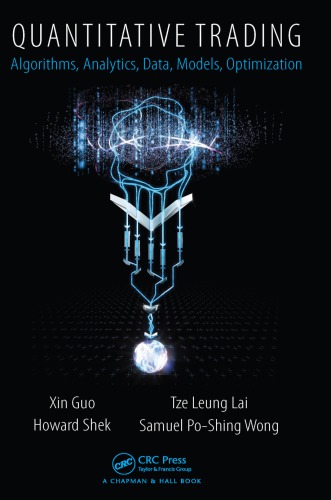دانلود کتاب Quantitative trading - algorithms, analytics, data, models, optimization - Original PDF
Author:
Wong, Samuel Po Shing
0 (0)
توضیحات کتاب :
This chapter gives an overview and some historical background of quantita- tive trading, the title of this book. It begins with a historical review of the evolution of the trading infrastructure, from verbal communication and hand signaling in an exchange to electronic platforms, in Section 1.1. It then gives in Section 1.2 an introduction to quantitative trading strategies and in par- ticular, the time-scales associated with different classes of strategies. In this connection, we give in Section 1.3 a brief historical account of the paradigm shift from the “efficient market hypothesis” (EMH) to arbitrage opportuni- ties via quantitative trading. In Section 1.4, we describe “quant funds” that use these quantitative trading strategies, and also the closely related mutual funds and hedge funds. An overview of the algorithms, analytics, data, models, and optimization methods — the subtitle of this book — used in quantita- tive trading is given in Section 1.5. Section 1.6 discusses the interdisciplinary background of the book and the anticipated diversity of its target audience. It also provides suggestions on how the book can be used by different groups of readers. Supplements and problems are given in Section 1.7.
سرچ در وردکت | سرچ در گودریدز | سرچ در اب بوکز | سرچ در آمازون | سرچ در گوگل بوک
1,148 بازدید 0 خرید










